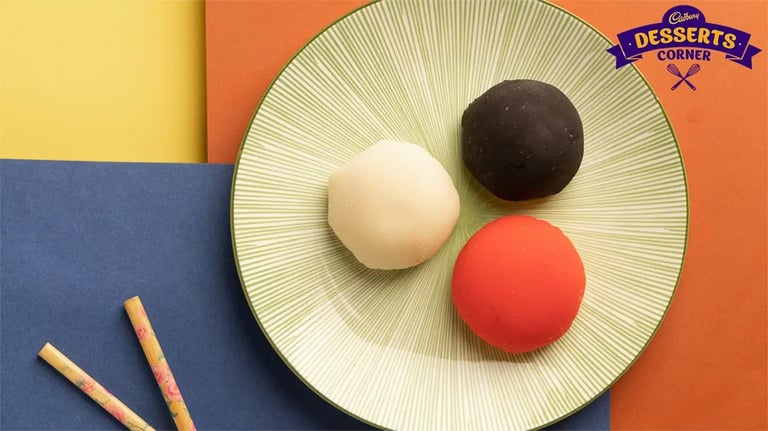Japan is the land of zen and good living, and its desserts are a reflection of the slow-paced lifestyle that still exists in some pockets of the country. What makes them special is that most of the desserts are centuries old and lack the overwhelming presence of refined sugar and rely on the sweetness of traditional local ingredients instead.

Japan is the land of zen and good living, and its desserts are a reflection of the slow-paced lifestyle that still exists in some pockets of the country. What makes them special is that most of the desserts are centuries old and lack the overwhelming presence of refined sugar and rely on the sweetness of traditional local ingredients instead.
Japan feels like a separate reality plan with its high-tech cities and yet, so charming and down-to-earth lifestyle of the rolling countryside. The desserts are also top-notch and not too sugary or calorie-laden, unlike the typical desserts of the West or those in India. Using humble ingredients and near-perfect presentation, the hard-working Japanese have a selection of delightful desserts.
Some require an expert hand and employ three trademark ingredients in interchangeable forms–red seaweed, which lends desserts their gelatinous quality; rice varieties that make them glutinous and chewy, and azuki beans, which is a red sweet bean used in many desserts in the island nation. Matcha, the powdered green tea equal to fairy dust in the wellness section, has also risen to prominence in the global scene. This has boosted the visibility of matcha-based desserts in Japan as well.
1. Matcha Swiss Roll

The Japanese swear by their matcha and for a good reason, it has an overpowering taste and can be bitter, but it is packed with a lot of nutrients. The matcha Swiss roll has a cake base of matcha-rich chiffon sponge cake, which is artfully knifed so it can later be rolled into the trademark Swiss roll. Then, whipped cream (containing the traditional Adzuki or Azuki beans or red mung bean) is added on top of the cake. The Japanese call this the roll cake and it is delicious if you really enjoy the diverse flavors of tea, especially matcha.
2. Anpan

You might recognize this one from the bun-faced superhero cartoon Anpanman, and a song by the same name by BTS. Anpans are simply buns with sweet azuki red bean paste filling. Other fillings like white beans, green beans, sesame, or chestnuts are also popular. It was a baker who was once a samurai during the Meiji period who is credited with making these sweet rolls for the first time. This made the Western bread more appealing to the Japanese palate for it included the local azuki beans that are most revered by Japan and added to almost every dessert in the country.
3. Wagashi

Made primarily from mochi, azuki beans, and agar powder (made from red algae, a jelly-like thickening agent) wagashi are accompaniments to green tea. This 2,000-year-old confection has many varieties, and mochi, daifuku, dango, manju, castella (jiggly sponge cake) and many other popular Japanese sweets all fall under the umbrella of wagashi. They are made in different shapes and colors all meant to be admired and eaten as a tea time snack but can also be eaten on their own. Portion control is an ingrained cultural thing in Japan and wagashi is served in smaller plates like most of the food in the volcanic island nation.
4. Anmitsu
Combining words “an” meaning sweet red bean paste, and “mitsu” meaning molasses syrup, anmitsu is a beloved summer dessert that originated in the Meiji period between the mid-1800s to the early 1900s. The anmitsu has a bed of bland kanten jelly that is topped with red bean paste and other sweet ingredients like fruits. There are other versions of this simple dessert that exist that do away with the red bean paste and the kanten jelly and some just add ice cream on top to sweeten the bland anmitsu. It’s like a healthy falooda with minimal calories that boasts of Japan’s local azuki beans, gelatinous seaweed and fruits. It is best enjoyed with a fork or spoon and served cold.
5. Japanese Cheesecake

You’ve heard a lot of the Grecian cheesecakes and also the more contemporary New York-style cheesecake that is known for its dense, yet sublime texture, but have you heard of Japan’s cheesecakes? Just like the wagashi castella, which is delightfully wobbly, the Japanese Cheesecake is also light and has a souffle-like quality. They are made from a combination of egg whites that are whipped and cream cheese making it ultra smooth and fluffy,making them jiggle. In the 1960s, inspired by a local käsekuchen cheesecake in Berlin, Japanese chef Tomotaro Kuzuno invented this cheesecake.
6. Dorayaki

Ask a kid who has seen the unedited version of Doraemon or the subbed version of the popular Doraemon cartoon, and they will know dorayakis for sure, which is the robot cat Doraemon’s favorite cake. The modern version was created in 1914 in Tokyo, but the early forms of this delicious pancake (castella cake) sandwich with the sweet azuki bean paste in between existed since the Edo period, between the 1600s to mid-1800s.
More Like This
Popular Articles




Trending Web Stories
Curated Recipes

















